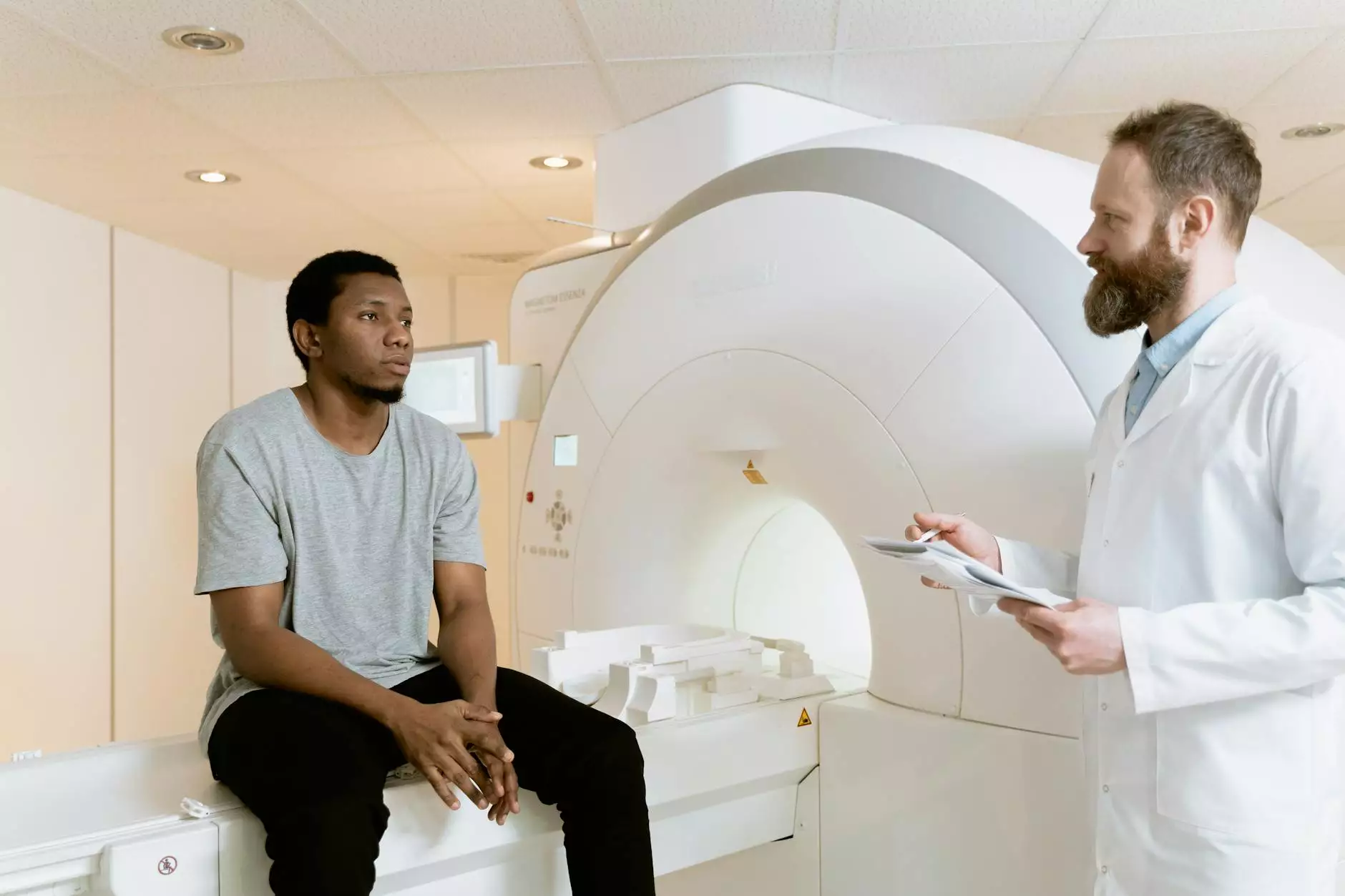Lung CT Scan: Understanding the Benefits and Procedures

The Importance of Lung CT Scans in Modern Medicine
In the realm of diagnostic imaging, lung CT scans hold a crucial position. These scans serve as invaluable tools in the early detection and diagnosis of various pulmonary conditions. Whether it’s detecting lung cancer, chronic obstructive pulmonary disease (COPD), or infections, a CT scan can provide detailed images of the lung anatomy that help healthcare providers make informed decisions regarding patient care.
What is a Lung CT Scan?
A lung CT scan, or computed tomography scan, is a specialized imaging technique that uses a series of X-rays and advanced computer algorithms to create cross-sectional images of the lungs. Unlike standard X-rays, which produce flat images, a CT scan provides a multi-dimensional view, allowing for a more comprehensive assessment of lung tissues and structures.
How Does a Lung CT Scan Work?
The process of a lung CT scan involves the following steps:
- Preparation: Patients may be advised to avoid eating or drinking for a few hours prior to the scan. It is crucial to inform the healthcare provider of any allergies, particularly to contrast dyes that might be used.
- Positioning: Patients lie on a comfortable table that slides into the CT scanner. Depending on the physician's instructions, the patient may need to hold their breath momentarily during the imaging process.
- Scanning: As the machine rotates around the patient, it takes multiple X-ray images from different angles. These images are then processed by a computer to create detailed cross-sectional views of the lungs.
- Post-Scan Analysis: After the scan, a radiologist interprets the images to identify abnormalities. The results can often be communicated to the patient the same day or during a follow-up appointment.
Reasons for Undergoing a Lung CT Scan
There are numerous reasons a healthcare provider might recommend a lung CT scan. Some of the most common indications include:
- Lung Cancer Screening: CT scans are highly effective in spotting early-stage lung cancer, especially in high-risk individuals, such as long-term smokers.
- Evaluation of Pulmonary Nodules: A CT scan can help determine the size and characteristics of lung nodules, aiding in the decision-making process regarding possible biopsies or further monitoring.
- Diagnosis of Pulmonary Diseases: Conditions such as pneumonia, interstitial lung disease, or pulmonary embolism can be more accurately diagnosed with the detailed imaging provided by a CT scan.
- Pre-Surgical Planning: A lung CT scan is often essential in planning for thoracic surgeries by providing a clear view of lung structures.
- Monitoring Treatment: For patients undergoing treatment for lung conditions, regular CT scans can help assess the effectiveness and any changes in the disease status.
Benefits of Lung CT Scans
The benefits of undergoing a lung CT scan are manifold:
- High-Resolution Images: CT scans offer superior image quality compared to standard X-rays, allowing for better visual evaluation of lung tissues.
- Fast Procedure: A CT scan typically lasts only a few minutes, making it a convenient option for both patients and healthcare providers.
- Minimal Discomfort: The process is non-invasive, and most patients experience little to no discomfort during the scan.
- Comprehensive Analysis: CT scans provide a wealth of data that helps in forming an accurate diagnosis and tailored treatment plans.
- Safety and Efficacy: With advancements in technology, the amount of radiation exposure has significantly decreased, making CT scans safer than ever before.
Risks Associated with Lung CT Scans
While lung CT scans are generally safe, it’s important for patients to be aware of potential risks. These may include:
- Radiation Exposure: Although the amount of radiation used is low, repeated exposure can accumulate over time.
- Contrast Media Reactions: For patients who receive a contrast dye, there is a minute risk of allergic reaction.
- False Positives: There is a possibility of detecting benign nodules or issues that may lead to unnecessary anxiety and further testing.
Preparing for a Lung CT Scan
Preparing for a lung CT scan is relatively straightforward. Here are some key recommendations:
- Consult with your physician about any medications you are taking.
- Inform the staff of any allergies, especially to iodine or shellfish, if contrast material is used.
- Wear loose-fitting clothing without metal fasteners to minimize interference with the imaging process.
- Stay hydrated unless instructed otherwise prior to the scan.
After the Lung CT Scan
Following a lung CT scan, most patients can return to their normal activities immediately. If contrast dye was administered, drinking plenty of fluids is recommended to help flush it from the body. Patients may receive their results within a few days, depending on the complexity of the analysis required.
The Role of Lung CT Scans in Health and Medical Practices
At Hellophysio.sg, a provider of health, medical, sports medicine, and physical therapy services, lung CT scans represent an integral part of comprehensive respiratory health. The intersection of technology and healthcare allows for early intervention strategies that can save lives. Subsequent treatment plans are often crafted based on the insights gained from these scans, emphasizing the critical role they play in patient health management.
Conclusion
In conclusion, a lung CT scan is more than just a diagnostic tool; it is a gateway to understanding and managing respiratory health. As technology continues to evolve, so too will the capabilities and applications of CT scans in the medical field. By recognizing the importance of these scans, patients and healthcare providers can work together toward fostering better health outcomes. If you're experiencing respiratory issues or believe you might be at risk for lung conditions, consult with your healthcare provider about the potential benefits of a lung CT scan.
Further Resources
For more information on lung health and diagnostic imaging, consider reaching out to reputable health organizations or visiting healthcare websites like Hellophysio.sg for additional resources and guidance.









